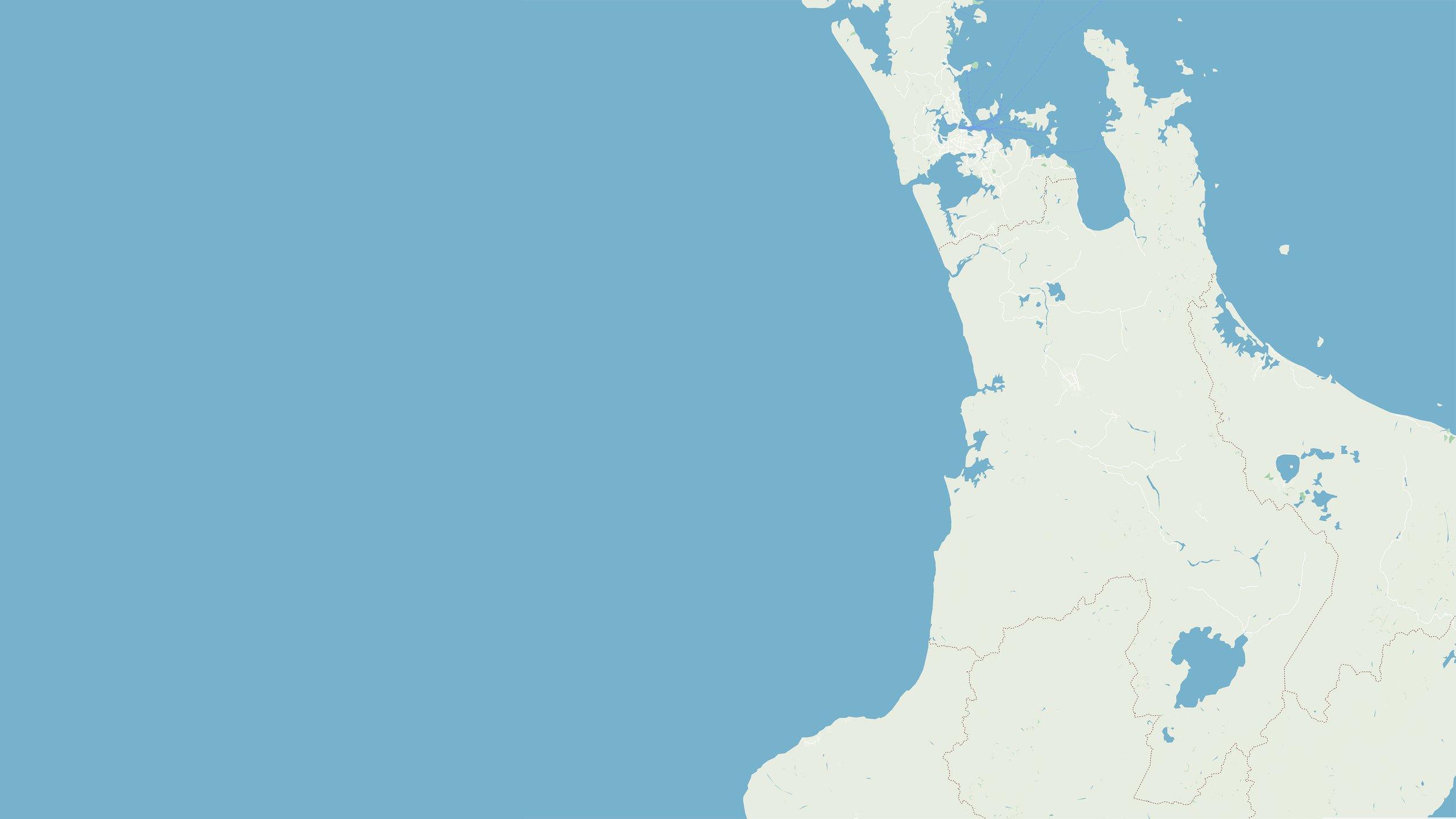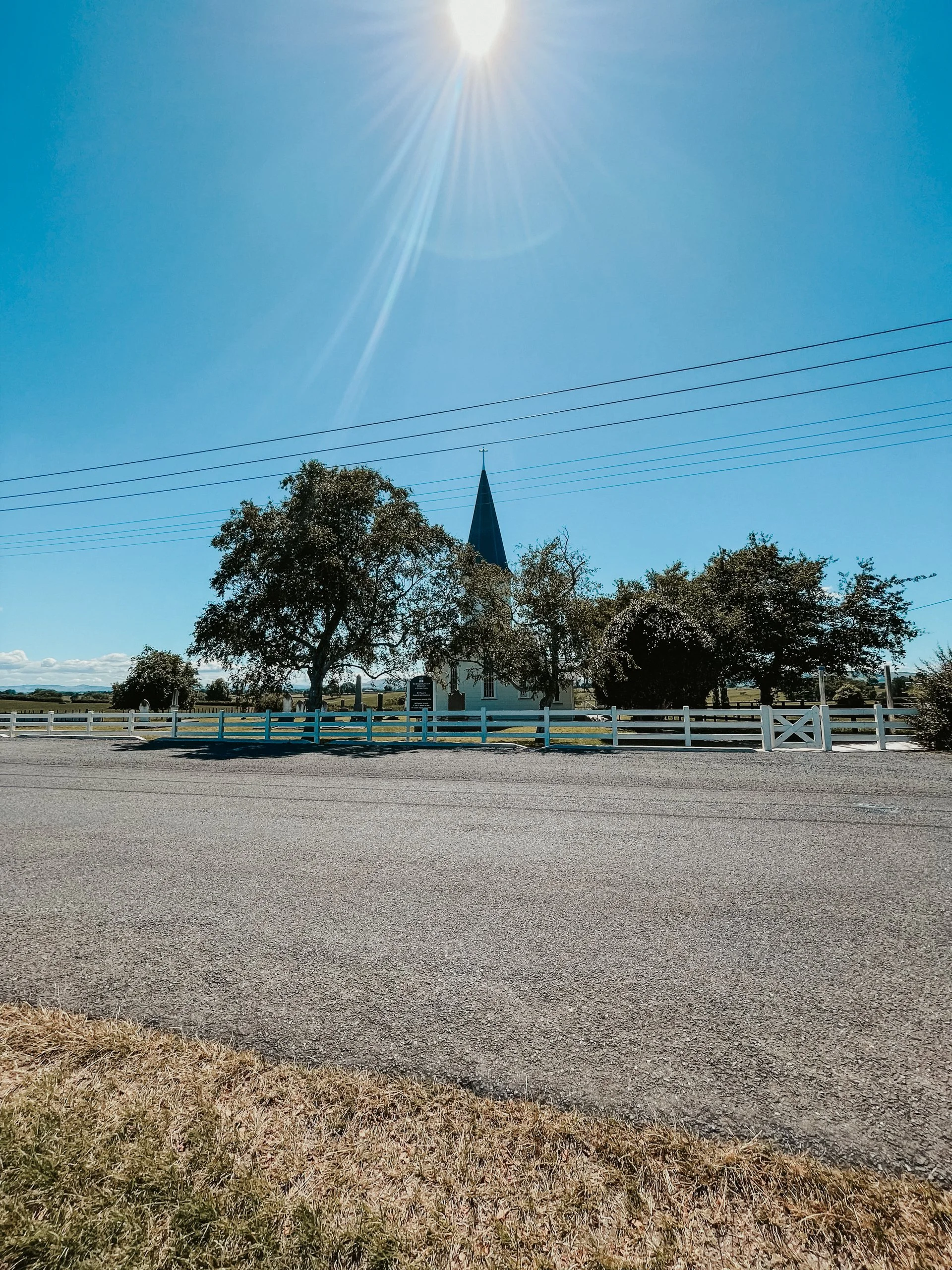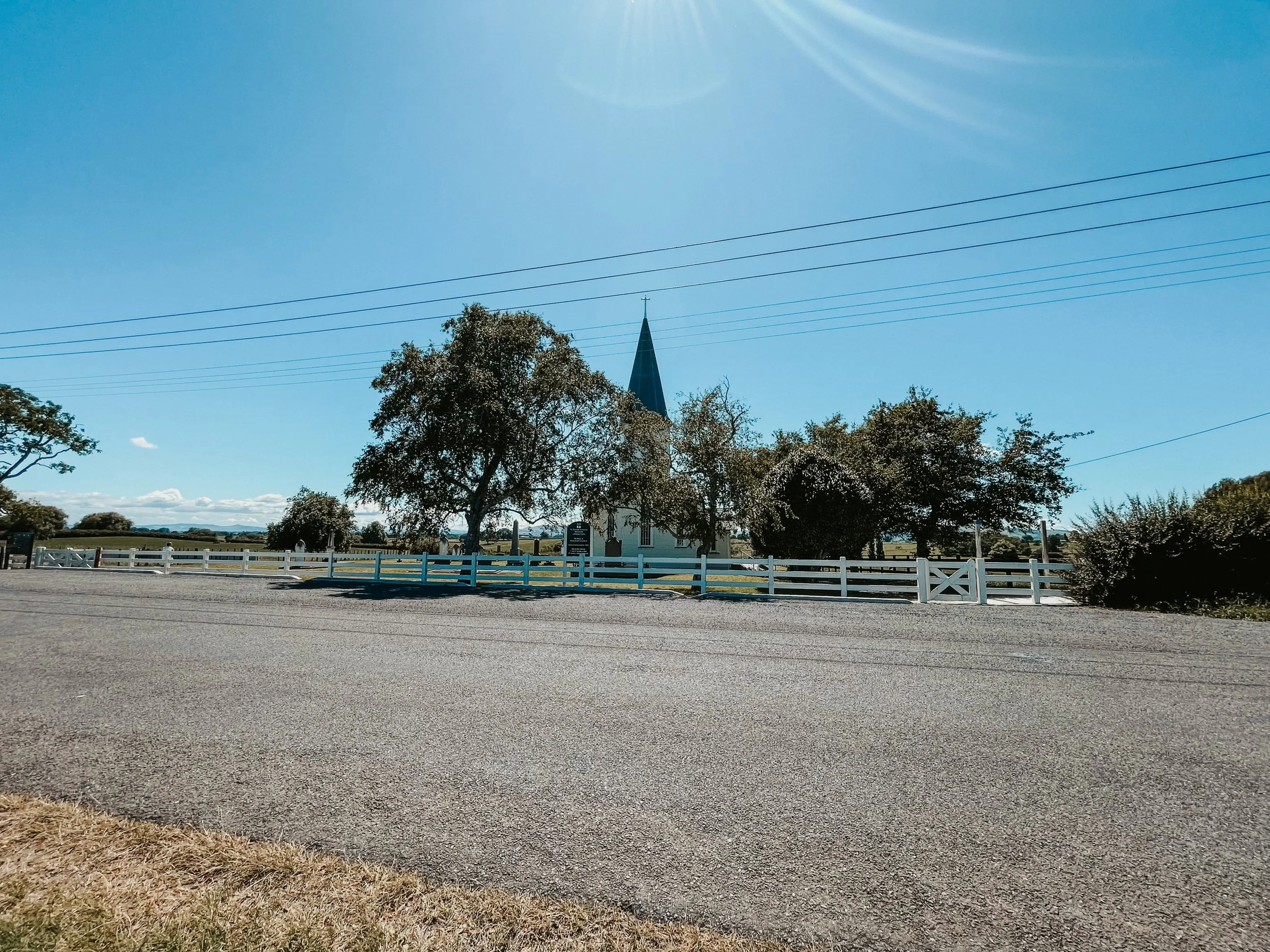
St Paul’s Church
Location: Rangiaowhia
Denomination: Anglican
Built: 1852-1856
On top of a hill and overlooking a valley, its white walls reflecting the morning sun, St. Paul’s stands solitary—the only building remaining from the once bustling town of Rangiaowhia. Known as the granary of the North Island, Pākehā shared with Māori how to grow European crops, including wheat, oats, and maize, as well as various types of orchards. Soon, the produce from these Māori-run mills and orchards supplied much of the North Island.
The church building itself was a collaboration between the Māori and Pākehā. John Morgan, a missionary with the Church Missionary Society, had recently transferred from Rotorua to Te Awamutu. He saw that both the Pākehā settlers and local Māori iwi were eager to see a church built and rallied the funds for the construction of St. Paul’s. The settlers provided £100, while the Māori provided £150 towards its construction. While St. Paul’s was designed in a typical European style, the timber was provided by Māori. When the church was completed, both Māori and Pākehā joined together as one congregation, worshipping God with one voice.
The harmony between Māori and Pākehā was sadly not to last. Increasingly, Māori were being pressured to sell land to the Crown that they were not willing to part with. Some of the prominent Māori rangatira at the time, including Tāmihana Te Rauparaha, thought that the strength of Britain was a result of their single monarch, Queen Victoria, and they sought to establish their own Māori king. Eventually, Pōtatau Te Wherowhero, a famous and powerful rangatira of the Waikato, reluctantly accepted the position, which he held for two years before he died. His son, Tāwhiao, succeeded him as the second Māori King. The establishment of the Māori king is called Kīngitanga.
Governor Grey was wary of the Kīngitanga and would not accept the idea of dual sovereignty in New Zealand. He was also concerned about the strength and prosperity of the Waikato iwi and feared they would make an attack on Auckland. So began the Waikato Wars in July of 1863.
The attack on Rangiaowhia occurred on February 21st, 1864. In the early morning, the inhabitants of Rangiaowhia were surprised at the arrival of 1,200 British Crown soldiers and were defenseless as their fighting men were all at Pāterangi Pā, some 15–20 kilometers away. The Europeans opened fire, and many Māori took shelter in various whare. In fact, the sister of the current Māori King Tāwhaio, Te Paea Tiaho, organized the Māori villagers at Rangiaowhia to shelter within the walls of St. Paul’s, knowing that the soldiers might honor the sacredness of the building.
After the attack, Rangiaowhia was abandoned, its people retreating back into the King Country. The only building left of the Rangiaowhia village, St. Paul’s stands in the memory of a tragedy but also as a reminder of hope—that together, Māori and Pākehā can become as one and create something beautiful.
References:
'Slide to war', URL: https://nzhistory.govt.nz/politics/treaty/the-treaty-in-practice/slide-to-war, (Ministry for Culture and Heritage), updated 7-Jul-2014
'The fight at Rangiaowhia ', URL: https://nzhistory.govt.nz/media/photo/fight-rangiaohia-mchales-body, (Ministry for Culture and Heritage), updated 22-Oct-2021
Rahui Papa and Paul Meredith, 'Kīngitanga – the Māori King movement - Tāwhiao, 1860–1894', Te Ara - the Encyclopedia of New Zealand, http://www.TeAra.govt.nz/en/kingitanga-the-maori-king-movement/page-3 (accessed 12 January 2024)
Rahui Papa and Paul Meredith, 'Kīngitanga – the Māori King movement - Origins of the Kīngitanga', Te Ara - the Encyclopedia of New Zealand, http://www.TeAra.govt.nz/en/kingitanga-the-maori-king-movement/page-1 (accessed 12 January 2024)
Rahui Papa and Paul Meredith, 'Kīngitanga – the Māori King movement - Pōtatau Te Wherowhero, 1858–1860', Te Ara - the Encyclopedia of New Zealand, http://www.TeAra.govt.nz/en/kingitanga-the-maori-king-movement/page-2 (accessed 12 January 2024)
Visit this church
1st and 3rd Sundays of the month - 9am
4th Sundays of the month - Reo Māori - 4pm
87 Rangiaowhia Road, Te Awamutu 3875
All our photos are copyright free! We are not affiliated with any of the churches that we photograph. If you this is your church and you would like these photos then please email us and we will give you the photos free of charge. For more information about copyright. Click here
Do you have more info on this church or are did we get details wrong? Please let us know!
















